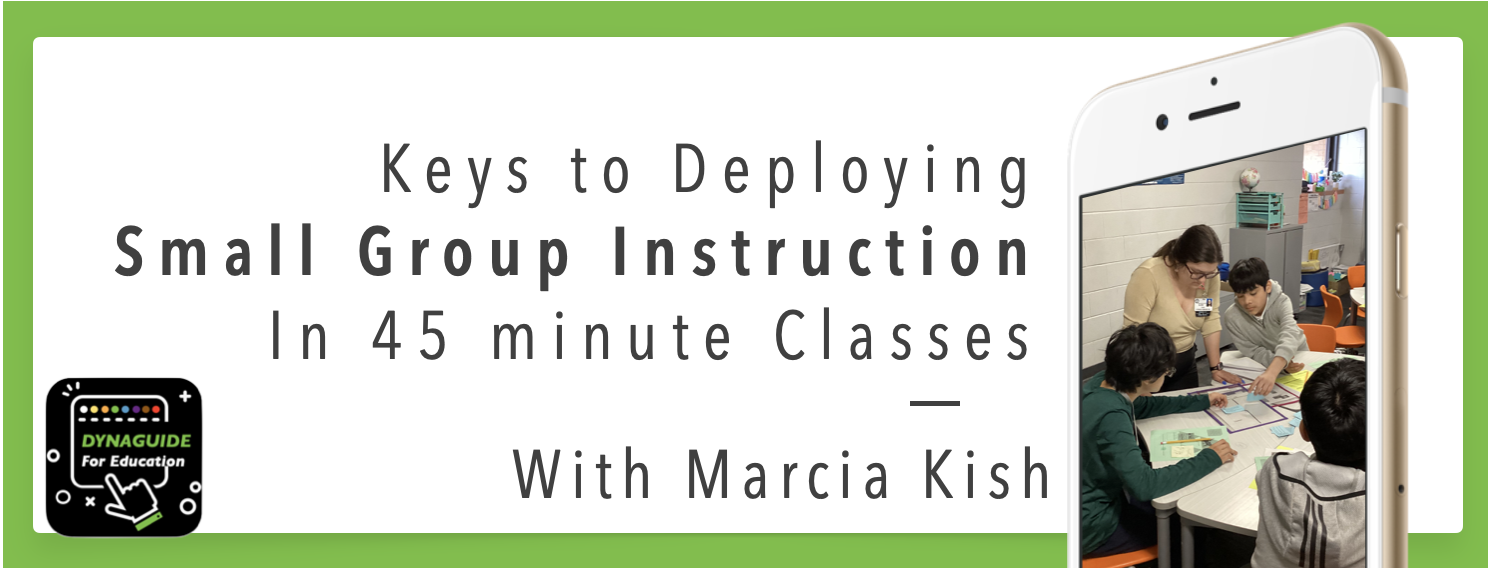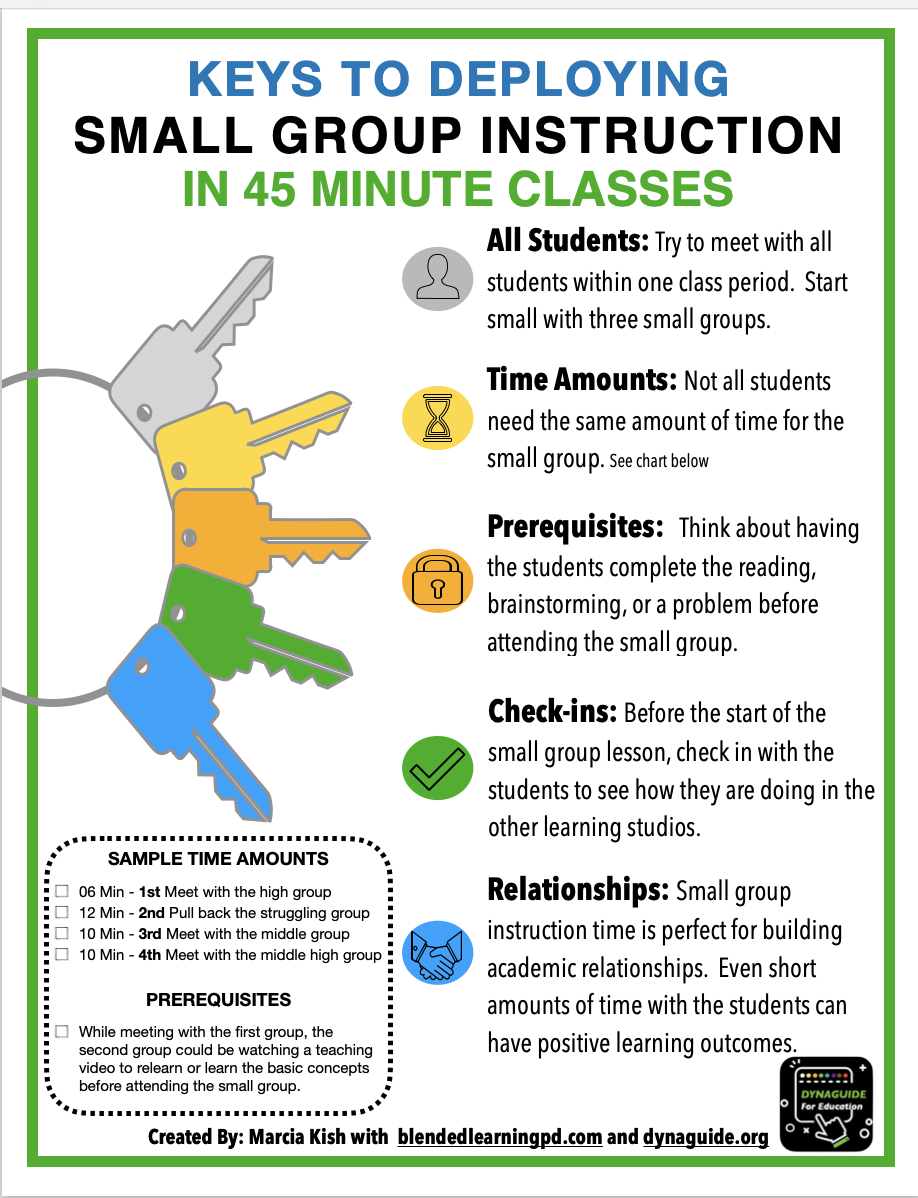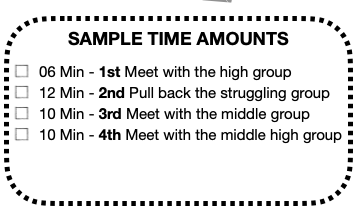All StudentsTry to meet with all students during one class period. To ensure that all students get to attend a small group learning studio, start with meeting with a third of the class at one time. Once the routines and procedures are in place with three small groups, then try to move to four groups. The small groups should eventually be designed to meet with a FEW students at a time. Six to eight students would be the maximum group size. Time Amounts
PrerequisitesAnother great way to ensure that all students attend the small group learning studio within a 45-minute class period is to think about setting up a prerequisite for the students to complete first. Think of the prerequisite as a way to prime the thinking process, providing more time for in-depth conversations and even allowing time for breaking down the big concepts during the small group instruction time. For example, think about having the students complete a reading or a brainstorming activity before joining a small group. By starting an activity that aligns with the small group lesson, the students will be ready to talk, share, and complete the lesson more efficiently. Check-insAs the students gather for the small group lesson, the teacher can take a moment to check in on the progress the students are making in the other learning studios. The quick check-in will allow time to answer questions from the other studios and check for completion. This simple to-the-point check-in process will help a teacher gain more time for small groups because the students will have a designated time to ask questions and showcase completed work. RelationshipsThe best part of small group instruction is the ability of the teacher to build academic relationships with the students. The relationship-building aspect is one of the biggest reasons why meeting with every student in a small group during learning studio days is essential. By building relationships, the students will stay on task during the other learning studios, allowing more time to meet with all of the students during the small group learning studio. Once the teacher and the students build up the routine and procedures for small group instruction, the students start to ask more questions, take time to process the information, and begin to enjoy learning in a small group setting rather than a whole group lecture.
0 Comments
Leave a Reply. |
AuthorS
Marcia Kish - Blended and Personalized Learning coach that designed the Three Phases of Blended Learning Categories |



 RSS Feed
RSS Feed